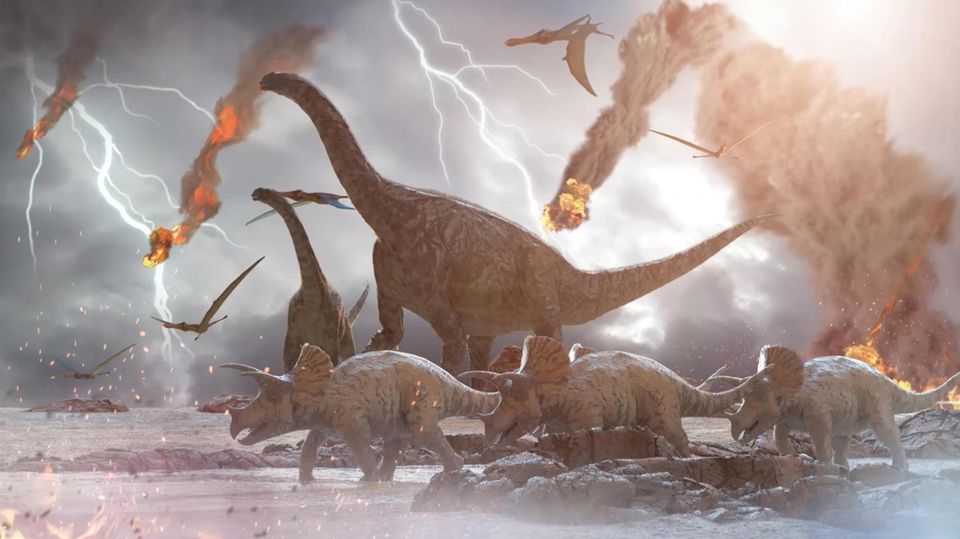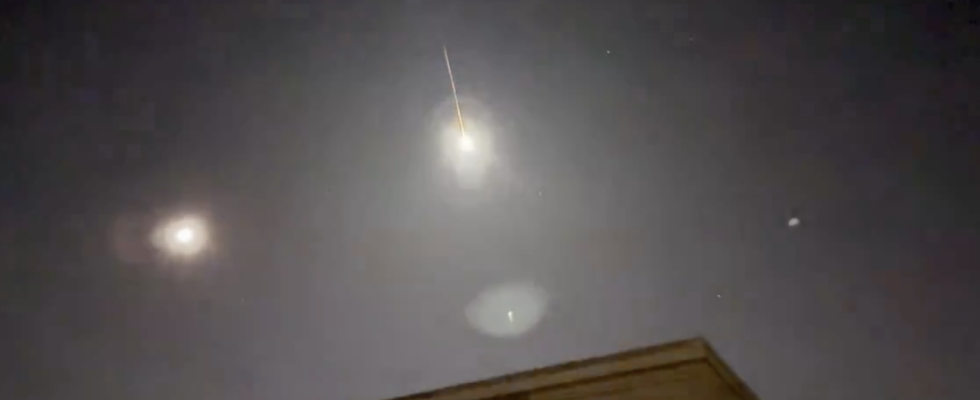space
Asteroid over Berlin: It became light in the capital’s sky tonight
Nasa reported it in advance – and numerous Berliners like Michael Aye, who took this picture, were waiting for him: an asteroid could be seen over the capital
© Michael Aye (twitter.com/michaelaye) / Franck Marchis (twitter.com/AllPlanets)
The asteroid called “2024 BX1” entered the atmosphere over Berlin tonight – resulting in a (very brief) celestial spectacle for the people of Berlin.
Anyone who was out and about in Berlin last night was treated to a rare sight. Because the asteroid with the provisional name “Sar2736”, now “2024 BX1“, entered the atmosphere around half past one and burned up clearly. Shortly before, the American space agency Nasa had drawn attention to the small celestial body via X, formerly Twitter, and wrote: “Attention: A tiny asteroid will soon be at 1: 32 p.m. disintegrated as a harmless fireball west of Berlin near Nennhausen. Careful observers will see it when it’s clear!”
This drew quite a few onto the streets and into their gardens: Michael Aye, planetary scientist at the Free University of Berlin, filmed the spectacle and published the video around two in the morning. On a starry night, a glowing ball suddenly appears, getting brighter and brighter and trailing a small tail behind it. After a few seconds it becomes dark again.
Enthusiastic observers from other cities also reported and shared their videos on social networks. Webcams in Prague and Leipzig also recorded the small fireball.
Asteroid “2024 BX1” was harmless
The Hungarian astronomer Krisztián Sárneczky, after whom another asteroid is named, first discovered “2024 BX1”. The size of the asteroid was estimated to be about one meter in diameter, which poses no threat to life on Earth.
Richard Moissl, physicist at the European Space Agency (Esa), suspects in an interview with the “Mirror“: “Due to the relatively low entry speed, meteorites could possibly have been formed.” It can be assumed that the fragments will be searched for in Havelland during the day, it continues.
This can definitely be financially worthwhile: Last year, a small meteorite hit a family’s property in Elmshorn. According to estimates, the 3.5 kilo stone is worth around 400,000 euros, it is said.
Asteroid, meteorite, comet: what’s the difference?
In the course of such reports, terms such as asteroid, meteorite, meteor and comet are repeatedly mentioned. Short explanation: An asteroid is also called a minor planet. These are large fragments of iron or stone that can range in diameter from one meter to hundreds of kilometers. The bigger, the more dangerous. Around 1,000 of these celestial bodies are currently on a watch list because a course towards Earth would be a major problem. None of them are really threatening at the moment.

A meteorite is a small body with a diameter of one millimeter to one meter. As a rule, these celestial bodies burn up completely when they enter the atmosphere; when an asteroid breaks up, it leaves behind meteorites.
A comet is something completely different. This is a solid body made of ice, stone, dust and gases that develops a glowing tail through outgassing. The term meteor also has something to do with a beam of light, as it describes the lighting up of shooting stars.



